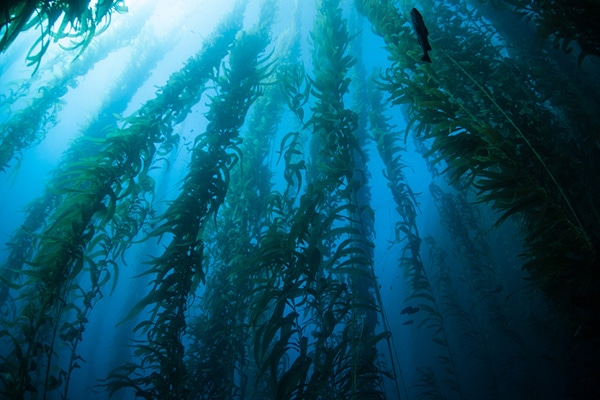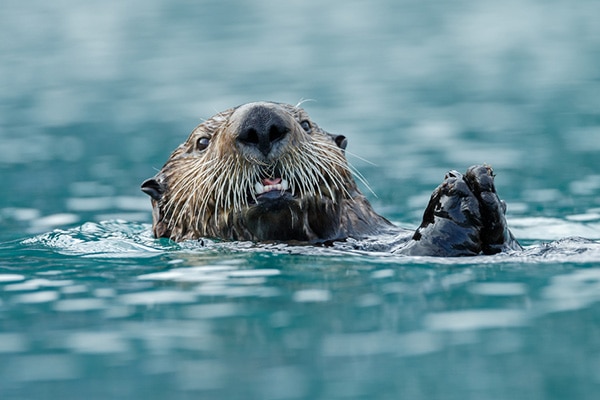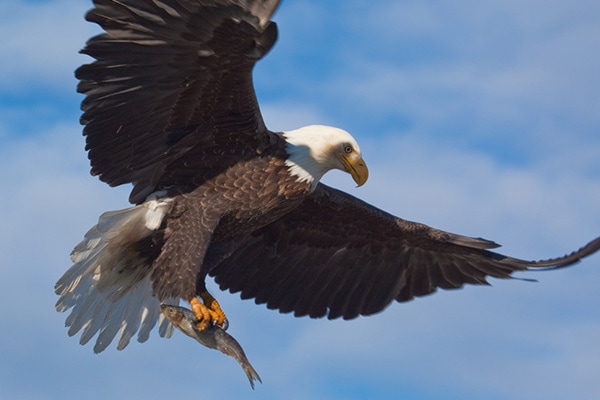Whether it’s because of climate change or the decline of sea otters, the loss of kelp forests has affected bald eagles significantly.
It’s been found that because of the tremendous decrease of kelp forests, bald eagles are forced to shift their diet from fish to seabirds and other mammals. According to researchers, they have become opportunistic foragers, eating whatever they can to survive. And while we worry about the loss of kelp forests, bald eagles have seemed to thrive.
In this article, we’re going to dive deeper into how the decline of kelp forests affected bald eagles. We’ll discuss:
- What kelp forests are
- The decline of the sea otter population
- Loss of kelp forests
- Consequences of kelp forest reduction
- The significant effects of the loss of kelp forests to bald eagles
Let’s dive into why the kelp forest is vital to bald eagles…
What Are Kelp Forests?

Kelp forests are groupings of kelp, a large brown alga that lives in cool and shallow waters near the shore.
These algae don’t have roots but are secured in place by holdfasts that lock onto rocks or cobble. And because kelp grows so large, growing up about 2-30 meters from the ocean floor and around 20-30 cm above the ocean’s surface, these algae look like forests when you dive down.
Kelp forests are usually found on rocky shorelines. They grow in nutrient-rich water with temperatures between 42-72 degrees Fahrenheit. It’s also important that the waters are clear so sunlight can reach the ocean floor.
If you think about it, these forests may seem like garbage that we don’t have any use for. However, just like with our land forests, the kelp forest is home to many different species of plants and animals. In fact, these forests are more diverse than any other ocean community we have.
Species you’ll often find in kelp forests include:
- Fishes such as herring and Atka mackerel
- Sea urchins and other marine animals
- Invertebrates like snails.
- Sea otters
Among the most important species in these kelp forests are sea otters and sea urchins. Sea urchins eat kelp and help control their population when they grow too big. Sea otters, on the other hand, eat sea urchins to control their population and preserve kelp forests.
But with the decline of the sea otter population, kelp forests are in danger, too!
The Decline of Sea Otter Population

Sea otters are keystone species, and a decrease in their numbers can affect a significant number of species.
They are the top predators of the kelp forest trophic cascade, feeding on sea urchins to keep their population under control and help preserve kelp forests. In other words, they help maintain ecosystem balance, protecting all species that live in the kelp forests.
At the same time, sea otters help reduce carbon dioxide levels by maintaining these kelp forests.
But now that sea otters are at risk of extinction, so are these large ecosystems.
Sea otters have been hunted to extinction in the 17th and 18th centuries just because of their fur. It was only by 1977 when they finally gained protection, but their numbers have never been the same again.
With climate change, sea otters have been one of the most vulnerable to environmental changes. Some of the significant causes of sea otter population decline are:
- Diseases
- Oil spills
- Natural predators
- Boat props
- Gillnets
- Poaching
Because of these, the efforts to protect their numbers are increasing. But with only 8000-10000 of them left, and numbers still decreasing, it seems that it will take a very long time before we can celebrate that they’re no longer endangered.
And until then, the decline in their numbers reduced the number of kelp forests.
Loss of Kelp Forests
Because the number of sea otters reduced, sea urchins thrived on the ocean floor. They would then attach to kelp forests, getting all their nutrients and eventually killing them.
But sea urchins aren’t the only threats to the kelp forest population. Human activity like overfishing, pollution, and climate change have tremendous effects on their decline. And because kelp forests couldn’t thrive in warm waters, they eventually die, significantly affecting the species that live under them.
Consequences of Kelp Forest Reduction
Here are some of the biggest consequences of kelp forest reduction:
Increase Rate of Global Warming
Kelp forests play a huge role in the carbon cycle. It is said that they capture around 75% of carbon around us, significantly bigger than what land forests can capture. And with their deaths, the rate of global warming can significantly increase, affecting all of us.
Loss of Ecosystem
As mentioned above, kelp forests serve as shelter to a wide variety of plants and animals. The populations here are more diverse than many ocean ecosystems, which means that when we lose them, we’ll be losing a lot of sea animals and plants, as well.
Lesser Food Availability
Kelp forests play an essential role in the marine food web. By absorbing nutrients from the water, their leaves serve as an excellent food source for many marine animals living around them. They nurture fish and wildlife, allowing the restoration of marine environments near shorelines.
But with them gone, marine animals might have to find another area to survive.
Shoreline Destruction
Kelp forests are located near shorelines. And with their presence, they can serve as a buffer against the waves that batter the shorelines, especially when there are intense storms. This helps prevent erosions while at the same time filtering pollutants from the water. And if they disappear, we might end up with destroyed shorelines with very little way to rehabilitate them.
The Effects Of The Loss Of Kelp Forests To The Bald Eagle
For sure, you’ve all seen a Bald Eagle. If it’s not in person, you have probably recognized it in the national emblem of the United States.
These birds are found all over North America. They mainly breed in Alaska and Canada while spending winter all over the United States. Some populations near the shorelines are found to be resident birds.

Bald Eagles nest in forested areas near large bodies of water. And according to research, once these birds find a suitable nesting place, they rarely leave and find another area to live.
Because of this, their primary food is fish such as herring, salmon, catfish, and shad. And you’ve probably guessed it by now; these birds hunt around many kelp forests, especially those that stay along the shorelines.
But with the decline of sea otters, an increase of sea urchins, and loss of kelp forests, the bald eagle’s dependency on marine fish is threatened. And so, they needed to find a way to adapt and survive.
How Eagles Are Opportunistic Foragers
Because of their evolutionary history, bald eagles become opportunistic foragers. This means that they start eating whatever prey is available. This now includes:
- Birds
- Reptiles
- Amphibians
- Invertebrates
- Mammals
In other words, their diet significantly shifted, leaving no choice but to eat more shorebirds than fish. And though most birds would find it hard to change their diet drastically, bald eagles seem to not have any problem, and in fact, thrived.
Increase In Bald Eagle Population
Following the change in their diet, bald eagles have also increased their reproductive productivity. Researchers believe that this might be because birds have higher caloric content than fish.
Because of this, this food provided bald eagles more nutrients, making them healthier and capable of reproducing more.
Final Thoughts On How The Loss of Kelp Forests Affected Bald Eagles
One thing that we can definitely get here is that every living thing in this world is connected.
The decline of sea otters caused the sea urchins to thrive. And when these species thrived, the kelp forests started to decline. With the kelp forests reducing in number, so are the kelp forest fish and other animals living in it. And this then further affected the diet of bald eagles, causing them to shift their diet from fish to shorebirds.
Although this shift in bald eagles’ diet seemed to affect them positively, it’s still sad that this happened because of the loss of kelp forests. And we hope that soon, with the efforts of many protection agencies, the sea otter population will rise again, allowing kelp forests to survive and the marine ecosystem to thrive.
After all, if there is one thing researchers have found, it’s that bald eagles prefer fish to shorebirds when it’s available for them.

from BirdInformer.com https://ift.tt/3zcZ81p

No comments:
Post a Comment